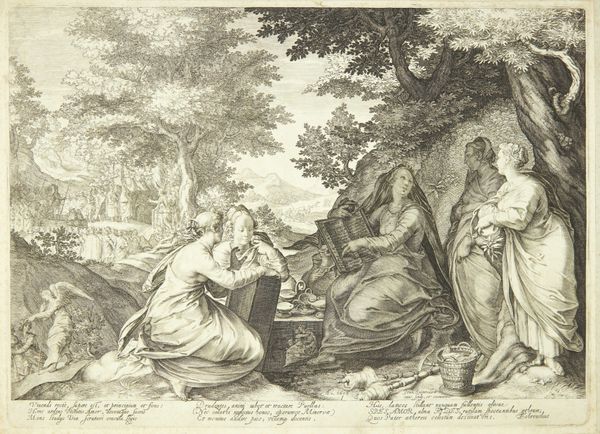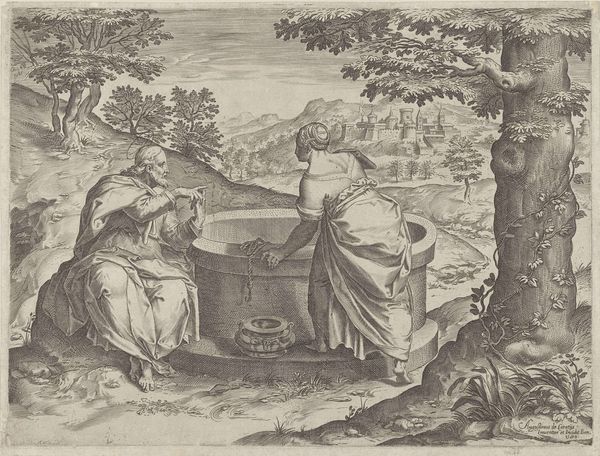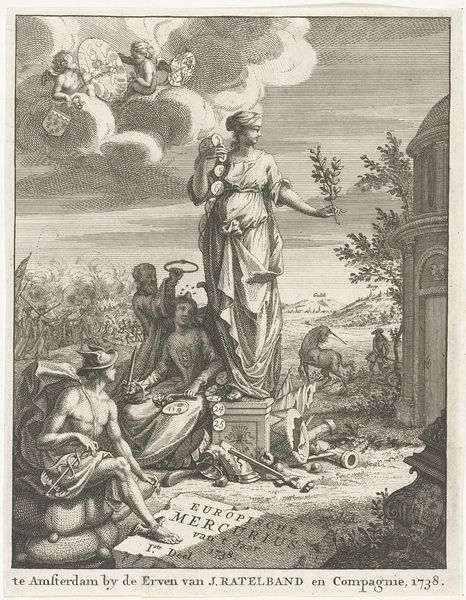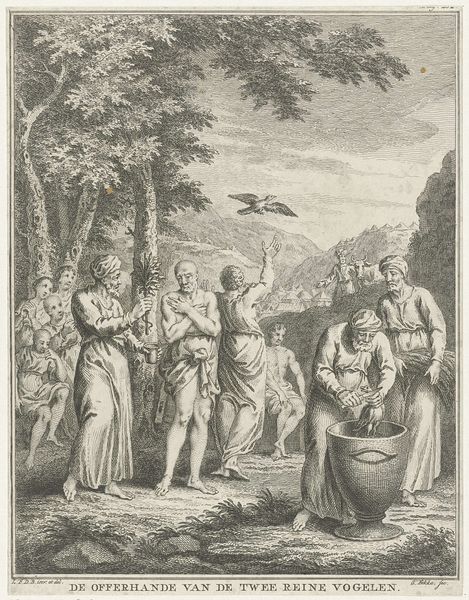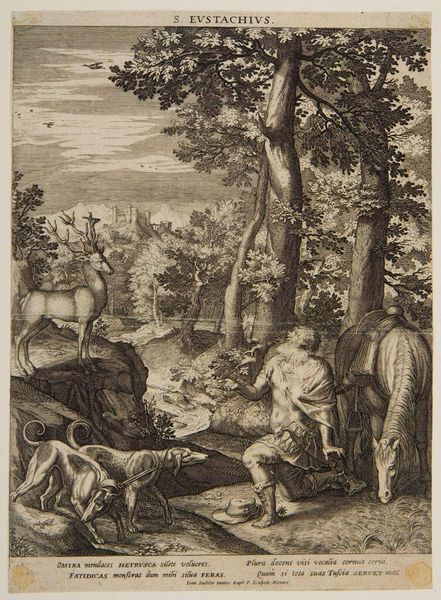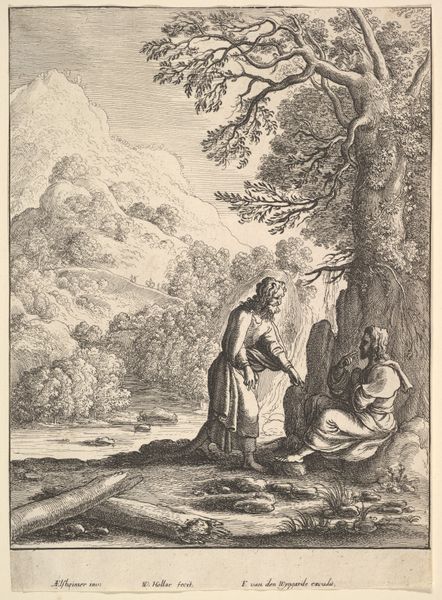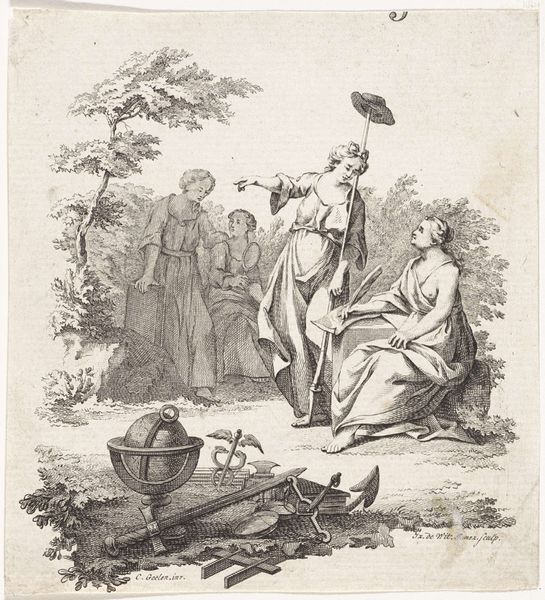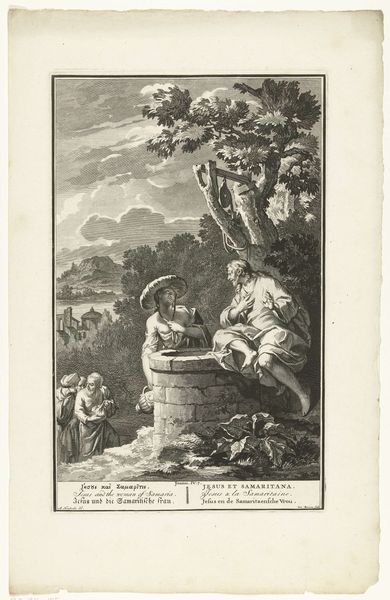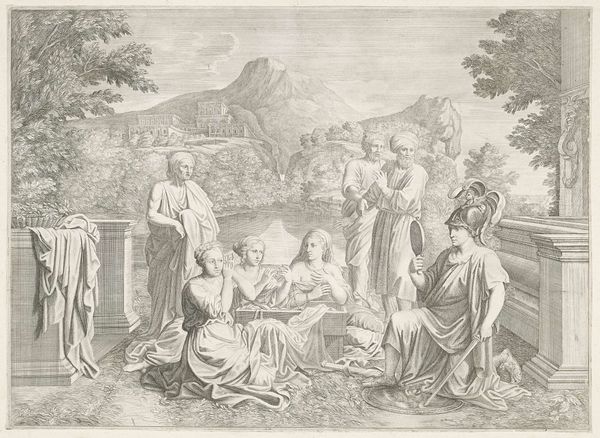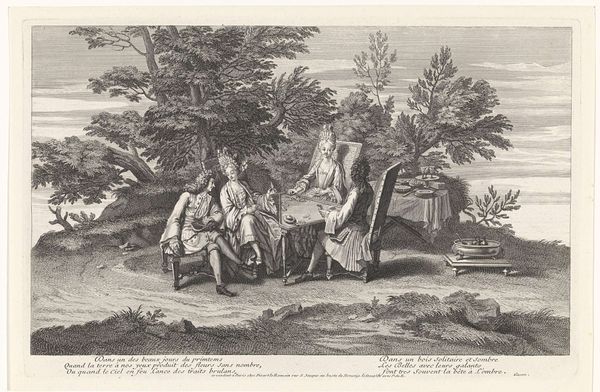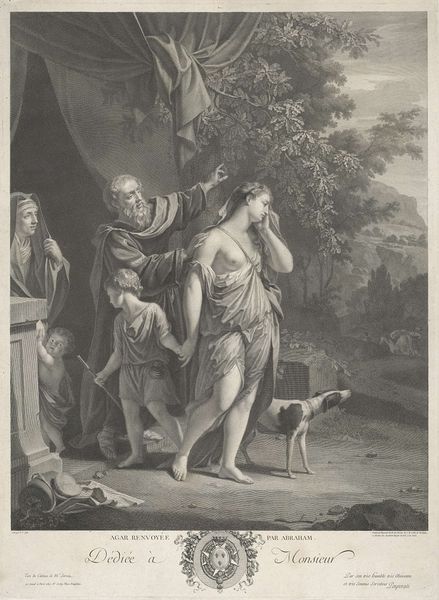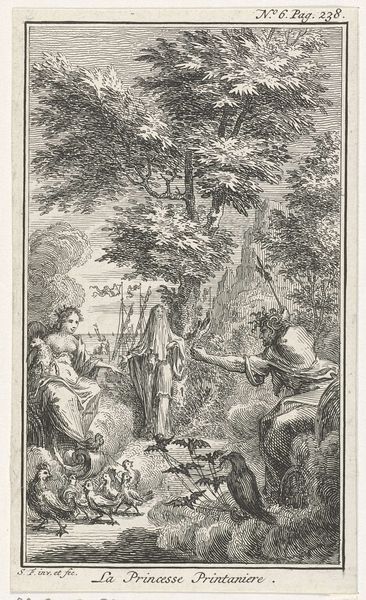
print, engraving
#
pen drawing
# print
#
landscape
#
mannerism
#
figuration
#
line
#
history-painting
#
engraving
Dimensions: height 259 mm, width 199 mm
Copyright: Rijks Museum: Open Domain
Editor: So this engraving, "Christ and the Samaritan Woman," by Jacob Matham, made around 1589, has a lot going on! I’m really struck by how theatrical it feels, almost like a stage set, but I am confused about the choice of showing Jesus asking for water as it feels like an attempt to humanize him. What's your read on it? Curator: I see this piece as deeply embedded in the social and religious upheavals of the late 16th century. The Reformation had profoundly altered the landscape of religious imagery, particularly in the Netherlands. Depictions of biblical scenes were no longer solely the domain of the Church; they entered the public sphere, often carrying specific ideological messages. Matham, working within this environment, seems to engage with the renewed emphasis on personal piety and biblical literacy promoted by Protestant reformers. The scene, set against a detailed landscape, removes it from the distant, idealized past, grounding it in a recognizable reality. What strikes me is not just the humanization of Christ, but also the positioning of the viewer. Does it not feel like an invitation to witness—and perhaps even participate in—a transformative encounter? Editor: That makes sense. The setting and the almost contemporary dress really do make it feel…present. But what about the Mannerist elements, like the almost exaggerated musculature of the figure drawing water, which could make this look as propaganda? Curator: Exactly! It's a negotiation between artistic style and socio-political function. Mannerism, with its emphasis on artifice and drama, could be a powerful tool for conveying religious narrative in a compelling way, drawing viewers into the scene. But that being said it does reinforce this tension between artistic expression and ideological agenda, revealing the complexities of art production within a religiously charged social landscape. Editor: I hadn't considered that balance before! Seeing it as part of the religious climate really adds a whole other layer. Curator: It is always rewarding to analyze artworks in light of how museums and galleries or different socio-political forces shaped their creation and impact.
Comments
No comments
Be the first to comment and join the conversation on the ultimate creative platform.
